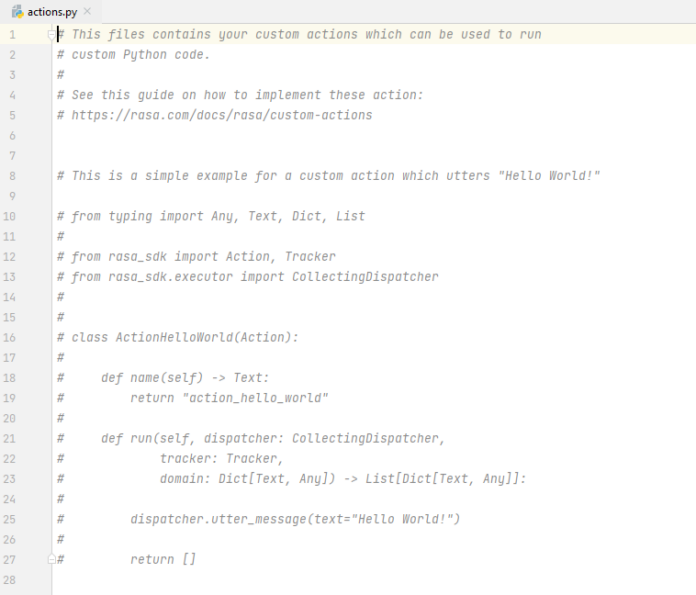The compact() method of java.nio.IntBuffer Class is used to compact the given buffer.
The values between the buffer’s current position and its limit are copied to the beginning of the buffer. The buffer’s position is then set to n+1 and its limit is set to its capacity. The buffer’s position is set to the number of floats copied.
Syntax:
public abstract IntBuffer compact()
Return Value: This method returns the new IntBuffer with the same content as that of this buffer.
Exception: This method throws the ReadOnlyBufferException, If this buffer is read-only.
Below program illustrates the compact() method:
Examples 1:
// Java program to demonstrate// compact() method import java.nio.*;import java.util.*; public class GFG { public static void main(String[] args) { // Declaring the capacity of the IntBuffer int capacity = 10; // Creating the IntBuffer // creating object of Intbuffer // and allocating size capacity IntBuffer ib = IntBuffer.allocate(capacity); // putting the value in Intbuffer ib.put(8); ib.put(9); ib.put(9); // print the IntBuffer System.out.println("Original IntBuffer: " + Arrays.toString(ib.array())); System.out.println("Position: " + ib.position()); System.out.println("limit: " + ib.limit()); // Creating a compacted IntBuffer of same IntBuffer // using compact() method IntBuffer IntBuffer = ib.compact(); // print the IntBuffer System.out.println("\nCompacted IntBuffer: " + Arrays.toString(IntBuffer.array())); System.out.println("Position: " + IntBuffer.position()); System.out.println("limit: " + IntBuffer.limit()); // putting the value in compacted Intbuffer IntBuffer.put(9); // print the IntBuffer System.out.println("\nUpdated Compacted IntBuffer: " + Arrays.toString(IntBuffer.array())); System.out.println("Position: " + IntBuffer.position()); System.out.println("limit: " + IntBuffer.limit()); }} |
Original IntBuffer: [8, 9, 9, 0, 0, 0, 0, 0, 0, 0] Position: 3 limit: 10 Compacted IntBuffer: [0, 0, 0, 0, 0, 0, 0, 0, 0, 0] Position: 7 limit: 10 Updated Compacted IntBuffer: [0, 0, 0, 0, 0, 0, 0, 9, 0, 0] Position: 8 limit: 10
Examples 2: To demonstrate ReadOnlyBufferException
// Java program to demonstrate// compact() method import java.nio.*;import java.util.*; public class GFG { public static void main(String[] args) { // Declaring the capacity of the IntBuffer int capacity = 10; // Creating the IntBuffer try { // creating object of IntBuffer // and allocating size capacity IntBuffer ib = IntBuffer.allocate(capacity); // putting the value in Intbuffer ib.put(8); ib.put(9); ib.put(9); ib.rewind(); // Creating a read-only copy of IntBuffer // using asReadOnlyBuffer() method IntBuffer ib1 = ib.asReadOnlyBuffer(); // print the ReadOnlyBuffer System.out.print("ReadOnlyBuffer IntBuffer: "); while (ib1.hasRemaining()) System.out.print(ib1.get() + ", "); System.out.println(""); // print the Position of IntBuffer ib System.out.println("\nPosition: " + ib.position()); // print the Limit of IntBuffer ib System.out.println("\nlimit: " + ib.limit()); // Creating a compacted IntBuffer of same ReadOnlyBuffer // using compact() method System.out.println("\nTrying to compact the ReadOnlyBuffer ib1"); IntBuffer IntBuffer = ib1.compact(); } catch (IllegalArgumentException e) { System.out.println("Exception throws " + e); } catch (ReadOnlyBufferException e) { System.out.println("Exception throws " + e); } }} |
ReadOnlyBuffer IntBuffer: 8, 9, 9, 0, 0, 0, 0, 0, 0, 0, Position: 0 limit: 10 Trying to compact the ReadOnlyBuffer ib1 Exception throws java.nio.ReadOnlyBufferException

